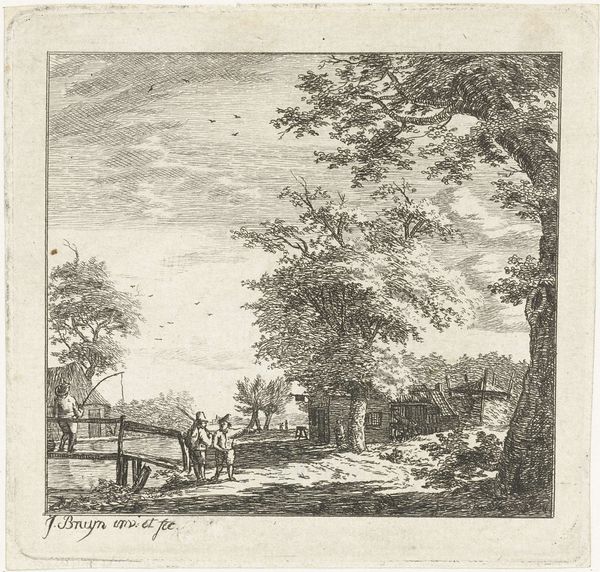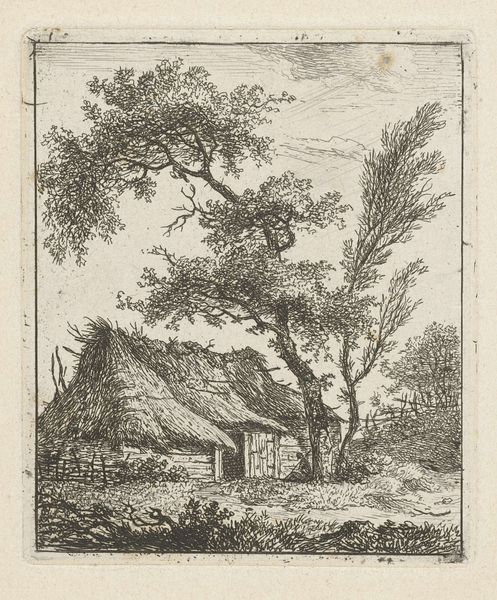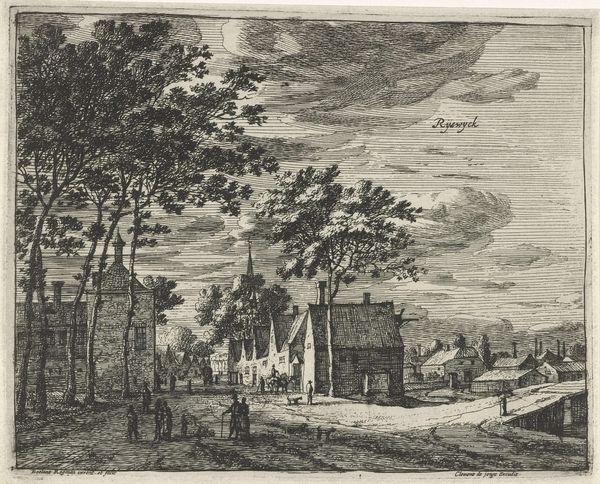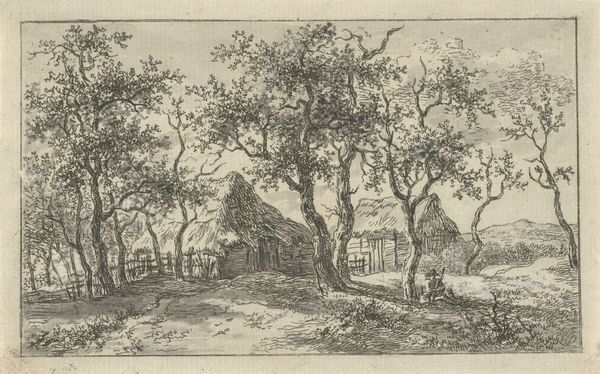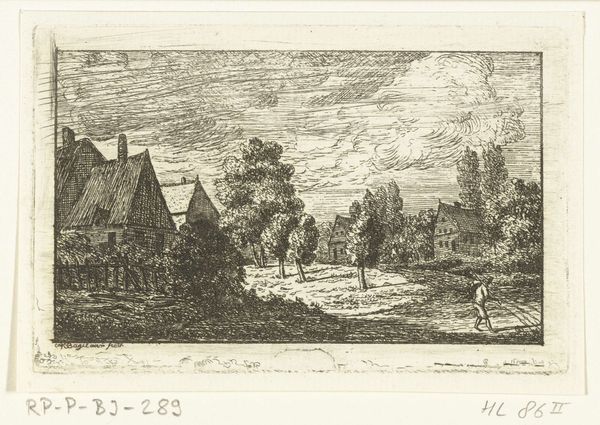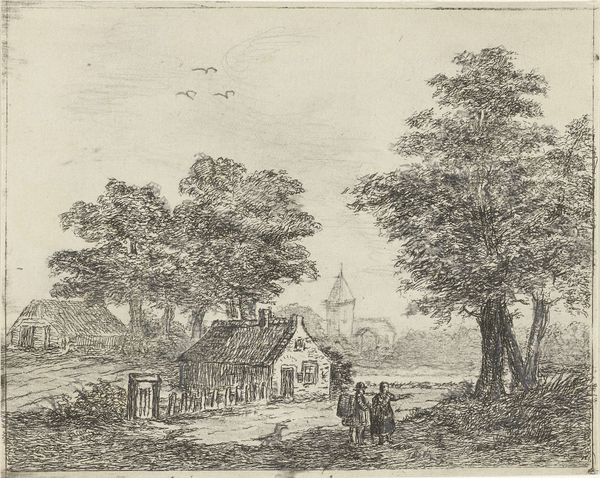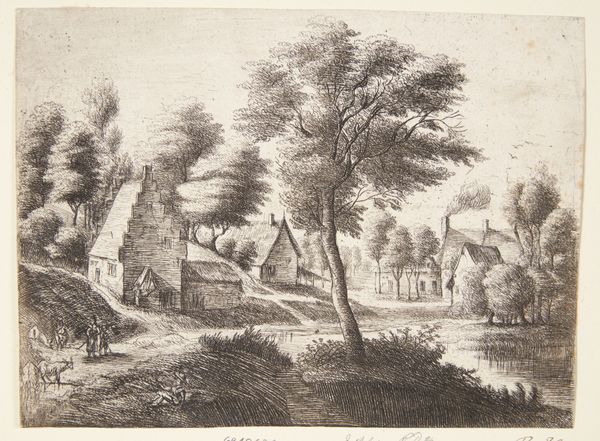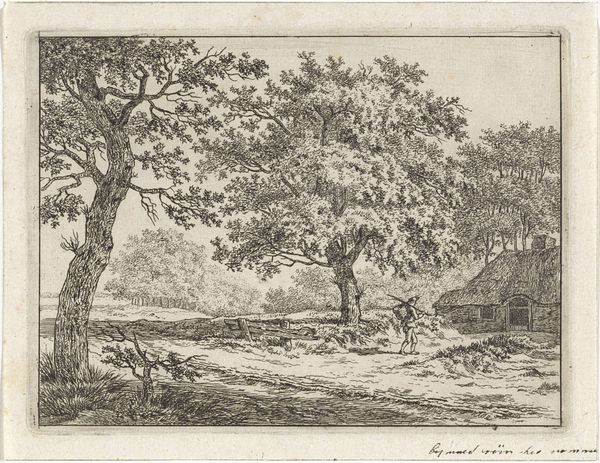
print, etching
# print
#
etching
#
landscape
#
etching
#
genre-painting
Dimensions: height 83 mm, width 92 mm
Copyright: Rijks Museum: Open Domain
Curator: What a lovely scene! I find it quite charming at first glance. There's a quietude about it that draws you in. Editor: I agree, there's an immediate pastoral sense. The detailed rendering of the foliage and the textures suggest meticulous crafting of this print. We're looking at “Dorpsgezicht”, which translates to "Village Scene", an etching by Johanna de Bruyn made sometime between 1732 and 1782. Curator: Knowing the title, I’m struck by how this artwork reflects eighteenth-century genre paintings where idealized rural life serves as a subtle critique of increasingly urbanized spaces and the class structures reinforced there. De Bruyn presents a vision—perhaps a wistful one—of communal existence outside that paradigm. Editor: Absolutely. Note the dominance of natural elements versus constructed architecture—the tree practically consumes the composition, its branches sprawling above the small dwellings and figures. De Bruyn is highlighting the essential materials—the very substance—of rural existence: earth, wood, water, presented via skilled deployment of the etching process. The line work alone speaks to sustained physical effort, implying that labour yields aesthetic harmony. Curator: Yes, and the figures! Look at the grouping near the center: presumably a father and child walking with burdens on their backs. The scene depicts movement but with such ordinary weight, hinting at labor and social position that can resonate even today as we explore mobility and immigration through modern social justice lenses. What do you see in the textures and patterns employed? Editor: The use of etching allows for a really fine grain in depiction of both foliage and stonework. Observe closely and it's evident de Bruyn varied her pressure to achieve different tonal ranges, resulting in subtle gradations that create both depth and nuance across the work surface. She isn’t merely recording visual details, she is consciously engaging with her material. Curator: It reminds us that art isn't just about aesthetics but is also a process, material and context bound up with history and identity! Editor: Indeed, and thinking about Johanna de Bruyn's decision to focus on common village life tells us a lot about potential buyers, too, and their aesthetic taste and consumer power in the late 1700s. The pastoral print reveals the prevailing relationship to nature as a resource during this period, thus capturing more than a landscape. Curator: It's a beautiful example of how an artwork, seemingly simple, engages in dialogues about societal anxieties, class structures, and longing, making it perpetually relevant. Editor: It encourages contemplation of material and history's presence right before our very eyes.
Comments
No comments
Be the first to comment and join the conversation on the ultimate creative platform.
